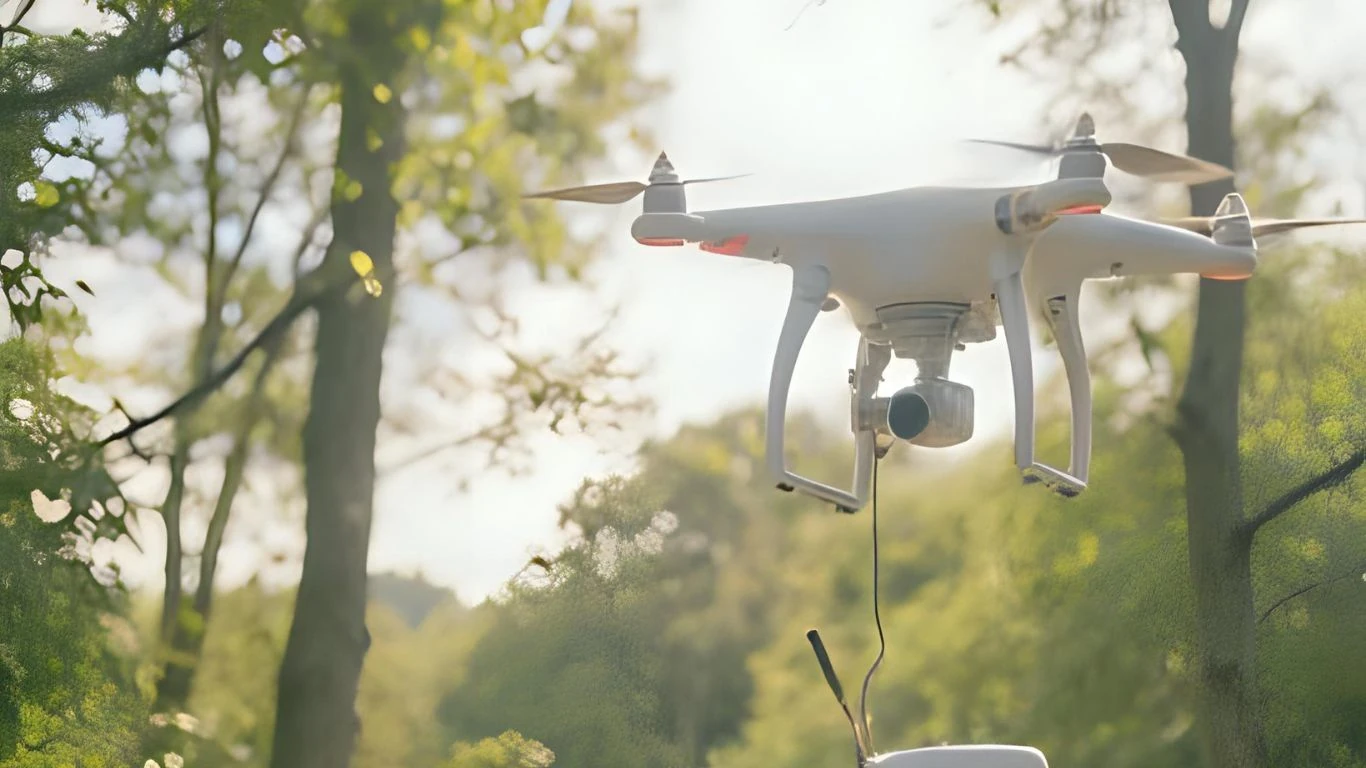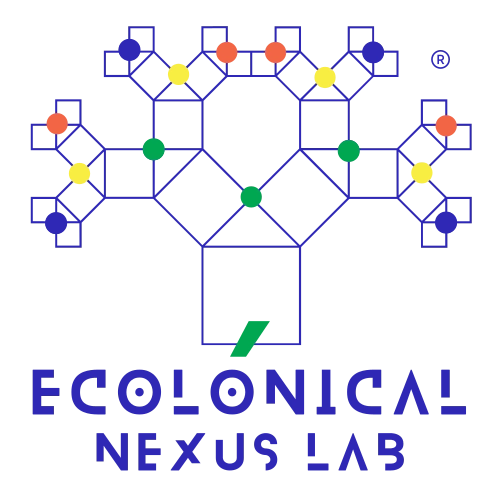No products in the cart.

The Ethics of Ecological Monitoring: 5 Hidden Dilemmas Behind Drones and Sensors
Ecological monitoring is evolving rapidly, but not without ethical implications. The ethics of ecological monitoring demand close attention as we rely more on drones, sensors, and AI to “read” the natural world.
In a rainforest clearing in Borneo, a small black device strapped to a tree trunk begins to hum silently. It’s a bioacoustic sensor, part of an ambitious effort to record species sounds continuously for the next six months. The goal is noble: to monitor biodiversity remotely, non-invasively, at scale.
But nearby, a community elder asks a question that is not found in any project proposal: “Who listens to the forest, and why?”
In recent years, ecological monitoring has undergone a technological transformation. Acoustic sensors, camera traps, aerial drones, and machine learning pipelines have become central tools in the documentation of biodiversity patterns across ecosystems. These instruments offer an unprecedented capacity for large-scale, continuous, and non-invasive observation.
Yet beneath this apparent neutrality lies a complex set of ethical and epistemological challenges. Who designs these tools? What do they privilege, and what do they miss? And how does the automation of observation affect the very meaning of “knowing nature”?
Contents
- Beyond the Sensor: Rethinking What We Consider an Observation
- Technical Scale vs. Epistemic Depth: What Automation Offers and What It Costs
- The Ethics of Presence: Power, Consent, and Territory
- Toward Reflexive Monitoring: From Datafication to Dialogue
- Reframing the Ethics of Ecological Monitoring
- Conclusion: What Does It Mean to Listen?
- References
- Further Reading: Independent Resources on Monitoring & Biodiversity
- Research Platforms & Tools
- Community-Based Biodiversity Science
- What ethical issues arise from deploying sensors in Indigenous or community-managed areas?
- How reliable is machine learning for identifying species in remote ecosystems?
- Can local communities contribute meaningfully to sensor-based monitoring projects?
- Author
Beyond the Sensor: Rethinking What We Consider an Observation
A recording is not a fact. It is a data artifact produced through a technical system, embedded in assumptions about relevance, objectivity, and detectability. Sensors are optimized for certain forms of life and behavior, meaning they always exclude something.
Moreover, their presence in the environment is not passive; it transforms both what is measured and what remains hidden.
Take bioacoustic monitoring, for example. While remarkably effective at detecting vocal species such as birds, frogs, or bats, these systems struggle to capture ecological interactions that occur silently or at frequencies beyond the hardware’s capabilities.
Environmental factors like wind, rain, or ambient noise further interfere with signal clarity. In heavily vegetated or topographically complex habitats, sensor coverage becomes uneven—introducing spatial blind spots that may skew downstream analyses.
And then there’s the software itself: classification algorithms often rely on training data from well-studied regions, limiting their accuracy in ecologically rich but underrepresented ecosystems.
Technical Scale vs. Epistemic Depth: What Automation Offers and What It Costs
Automation excels at producing data volume and frequency, but these strengths can become epistemic weaknesses if not interrogated.
Data becomes meaningful only through interpretation, which requires ecological theory, local knowledge, and institutional context. As data pipelines become more autonomous, their interpretive fragility increases.
For example, a sensor network may record thousands of hours of audio or millions of images, but unless these outputs are anchored in situational expertise—knowledge of seasonal rhythms, behavioral patterns, or landscape dynamics—the result may be a vast archive of disembodied signals.
The richness of biodiversity is not reducible to its detectability by machines. Moreover, interpretive frameworks tend to compress the data into metrics like vocal activity index or species richness, potentially flattening behavioral nuance or ecological complexity into single-dimensional indicators.
| Dimension | Automated Systems (Strengths) | Contextual Knowledge (Limitations If Excluded) |
|---|---|---|
| Temporal Coverage | 24/7 monitoring, seasonal consistency | Lack of behavioral interpretation or seasonal context |
| Spatial Scale | Coverage of remote or vast areas via drones/sensors | Loss of microhabitat insight or species interactions |
| Species Detection | Effective for vocal or visually distinct species | Bias against silent, cryptic, or low-density organisms |
| Data Processing | Efficient through AI/ML algorithms | Black-box models obscure interpretive assumptions |
| Ownership & Consent | Centralized storage, interoperable platforms | Neglect of local governance, informed participation |
The Ethics of Presence: Power, Consent, and Territory
Sensors used in ecological monitoring are not neutral or invisible. They are embedded in physical environments and social contexts. When placed in Indigenous territories or community-managed forests, they introduce more than just observation—they represent institutional presence, often disconnected from the lived experiences of the land.
Even with good intentions, these technologies can raise concerns about surveillance, intrusion, or data appropriation. The ethical implications of ecological monitoring become especially urgent when local communities are not meaningfully involved in planning or decision-making.
In some cases, sensors record culturally sensitive soundscapes, such as human voices or ceremonies. Capturing these—intentionally or not—raises serious questions about consent, privacy, and cultural sovereignty. Local protocols for observing and interpreting nature often conflict with the assumptions built into remote sensing technologies.
When decisions about data access, interpretation, or storage are made without community input, it reinforces existing power imbalances. Even collaborative projects often rely on centralized infrastructure. Data collected in the Global South is frequently analyzed and published in institutions in the Global North, perpetuating patterns of exclusion—not through overt denial, but through procedural dominance.
Toward Reflexive Monitoring: From Datafication to Dialogue
What alternatives can make ecological monitoring more ethical and inclusive? A growing movement in conservation science is advocating for reflexive monitoring. This approach treats data not as objective truth, but as situated knowledge—always shaped by context, perspective, and power.
Reflexive monitoring doesn’t reject technology. Instead, it calls for integrating tools like acoustic sensors or AI within participatory, pluralist frameworks. When communities help select monitoring sites, annotate findings, or define meaningful indicators, data gains ecological and cultural depth.
Rather than flattening complexity into a single metric, reflexive approaches welcome uncertainty and multiple interpretations. This shift—from datafication to dialogue—aligns ecological monitoring with justice, accountability, and respect for diverse ways of knowing nature.
When local communities participate in selecting monitoring locations, annotating recordings with ecological knowledge, or defining what counts as a meaningful indicator, the resulting data gains valuable context. Tools that support annotations, layered narratives, or multiple interpretations help preserve complexity and uncertainty—rather than simplifying ecological realities.
Technologies that embrace ambiguity may offer better alignment with the unpredictable and dynamic nature of ecosystems. In contrast, systems that prioritize uniformity or certainty may miss key ecological or cultural signals.
A reflexive monitoring approach requires recognizing the limits of automation. High-frequency, high-volume data can create an illusion of comprehensiveness, even as many ecological and social dynamics remain invisible. Accepting this limitation is not a flaw—it is a foundation for collaborative knowledge-making.
By inviting dialogue across knowledge systems—including Indigenous knowledge, local traditions, and scientific methods—reflexive monitoring fosters accountability in how data is gathered, interpreted, and used. It shifts ecological monitoring from data extraction to ethical engagement.
Reframing the Ethics of Ecological Monitoring
The ethics of ecological monitoring extend beyond data quality or technical efficiency. They encompass questions of power, access, and validation. Whose perspectives shape the indicators? Whose knowledge is amplified—or ignored—when machines speak on behalf of ecosystems?
Without addressing these foundational concerns, even well-meaning monitoring initiatives risk reinforcing asymmetries in voice, control, and visibility.
Conclusion: What Does It Mean to Listen?
We have built machines that can listen to the forest. But have we asked who decides what matters in what they hear? As acoustic sensors collect signals and algorithms generate patterns, a deeper question arises: are we observing nature—or reconstructing it in our own image?
The ethics of ecological monitoring are not just technical design challenges. They are questions about ownership, interpretation, and authority. Who controls the data? Who defines significance? Whose voices are erased when listening becomes automated?
What if the forest communicates in ways our machines cannot hear? What if our focus on metrics obscures the values that matter most to those who inhabit these landscapes?
As monitoring becomes more scalable and automated, the risks of oversimplification grow. More data doesn’t always mean better understanding. Sometimes, it just reinforces what we already assume to be true.
Ultimately, the ethics of ecological monitoring may not depend on how sophisticated our tools are—but on whether we’re willing to let the forest question us back.
References
Further Reading: Independent Resources on Monitoring & Biodiversity
A curated selection of public resources and tools relevant to biodiversity monitoring and community science. These links are aligned with the themes discussed in the article.
Research Platforms & Tools
- WILDLABS – A global hub for conservation tech collaboration.
- Arbimon – Acoustic biodiversity monitoring platform with AI tools.
- Biodiversity & Ecology Articles – In-depth internal resources on ecological ethics and biodiversity studies hosted on Ecolonical.org.
Community-Based Biodiversity Science
- Global Forest Watch – Monitoring forest change with open data.
What ethical issues arise from deploying sensors in Indigenous or community-managed areas?
How reliable is machine learning for identifying species in remote ecosystems?
Can local communities contribute meaningfully to sensor-based monitoring projects?
Author
-

Milena-Jael Silva-Morales is the Founder & Director of Ecolonical LAB, an independent research lab specializing in data, AI, and territorial systems. A systems engineer with a Ph.D. in Urban & Territorial Systems and over 13 years of experience in R&D&I, she focuses on FAIR data governance, AI ethics, and interdisciplinary methodologies for water, energy, and biodiversity systems.
View all posts
This article is governed by the Ecolonical Open Knowledge License (EOKL Lite V1). This license explicitly prohibits the use of its contents for AI model training, dataset integration, algorithmic processing, or automated decision-making systems. Unauthorized computational aggregation, reproduction beyond permitted terms, and any use conflicting with open knowledge principles are strictly restricted.
For legally binding terms, compliance obligations, and permitted exceptions, refer to the License Usage Policy.
Under specific conditions, this content aligns with the Creative Commons Attribution-NonCommercial-ShareAlike 4.0 International License. However, any AI-related processing, direct commercial exploitation, or automated derivative work remains subject to EOKL Lite V1 restrictions.






Leave a Reply